is trapped in the past.
Hannah Lamar Simmons, from the series, Have You Read The News Today.
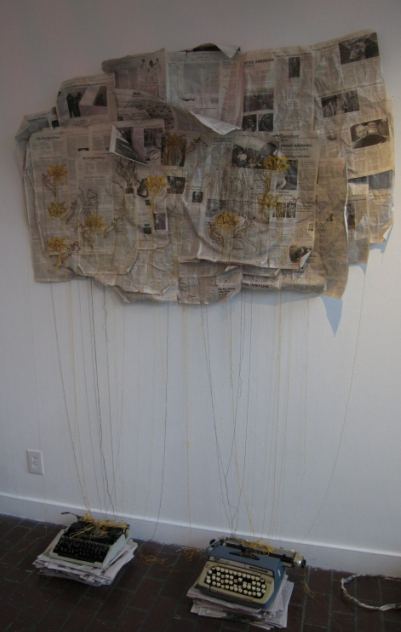
Regina Hackett takes her Art to Go
David Dupuis – Lost on the Frontiers of Heaven and Hell
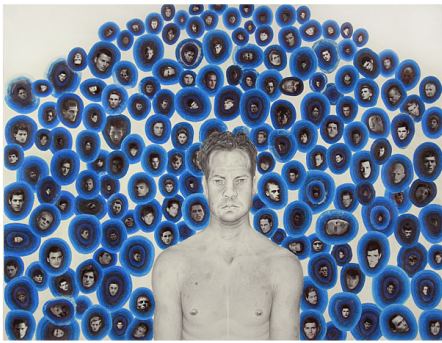 Tracey Emin – Everyone I have ever slept with, 1963-1995
Tracey Emin – Everyone I have ever slept with, 1963-1995
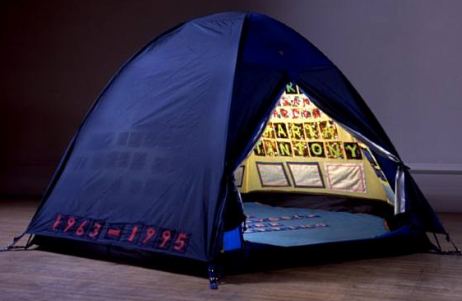
William Powhida’s cartoon attacking the New Museum is terrific as a cartoon. As he points out in his blog, in case the audience is too dim to see the connection, it derives from the slashing wit of Ad Reinhardt, who terrorized reactionaries in the late 1940s.
Cartoons are supposed to be unfair, one-sided and vehement. Powhida delivers on all counts. Less successful is the journalism that has risen like a surface to air missile to share in the attack. I’d like to propose the Dick Cheney rule for art writers. Is the subject under investigation poisoning the waterways, stealing from the poor to serve the rich, starting wars and trampling the Constitution? In short, is that person Dick Cheney?
If not, wouldn’t it be a good idea to explore the issue with a little more dispassion? In spite of what a handful of art bloggers insist, there are many sides to the so-called ethical questions raised by the museum’s decision to feature the collection of one of its trustees, curated by Jeff Koons. (Good overview from the New York Times here.)
Purity police chief Tyler Green would prefer that we not see this show. I don’t know Dakis Joannou and am not likely to be invited to his house. I do know about his collection and am grateful it will be on view to the public.
About those ethical problems: I have them with museums featuring trustee collections only when the collections are mediocre. In that case, the exhibit is just flattery. Joannou’s collection is remarkable. I want to see it and don’t care whose board he’s on.
The hip bone’s connected to the thigh bone. O, the horror. Trustees know collectors who know artists who know dealers who know museum curators. Some of them sleep together. Some of them are married. Rather than slamming Elizabeth Peyton and Urs Fischer for being connected, how about looking at the work? Both of them are extraordinary artists. I saw the New Museum’s Peyton show. Like almost everything else at the the new version of the New Museum, it was badly installed (tough space), but I welcomed the chance to see that much of her work in one place.
There is no rule against museums devoting shows to the work of a single collector. If there were, that rule would be made to be broken. Yes, the rich and powerful are involved in museums. Those for whom this information is a shock and an outrage are too pure (and rigid) to live in the world. If New Museum founder Marcia Tucker did not have them on her team, her enterprise wouldn’t have launched or lasted.
Bill Finger spent 16 years working as a movie-set cameraman before packing it in to become an artist. He can run, but he cannot hide. In every way, the career that he ditched informs the one he moved into.
He builds models that he photographs as full-scale environments. After Thomas Demand, Oliver Boberg, James Casebere and Ross Sawyers,
it’s a popular strategy, but Finger’s are unlike anyone else’s. They were born worn out and anonymous, as if endless actors had been interrogated inside his police station…
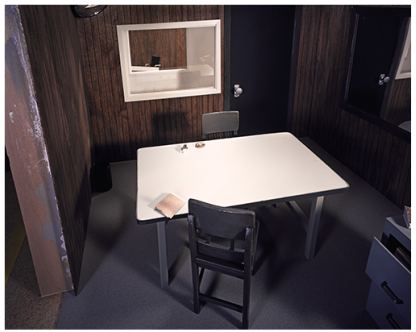 stared out his window …
stared out his window …
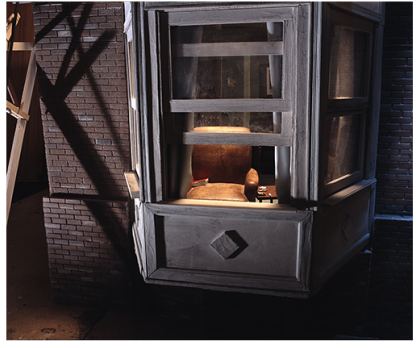 or glanced at the extra sleeping on a mattress that had been distressed by the special effects department.
or glanced at the extra sleeping on a mattress that had been distressed by the special effects department.
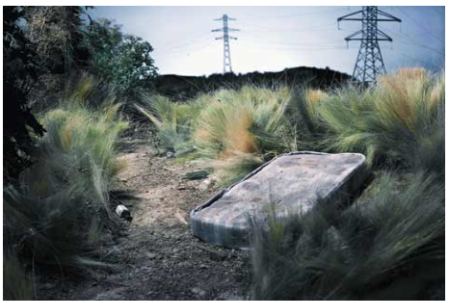 Although he tends to avoid the particular, when he engages it, he goes all the way to iconic.
Although he tends to avoid the particular, when he engages it, he goes all the way to iconic.
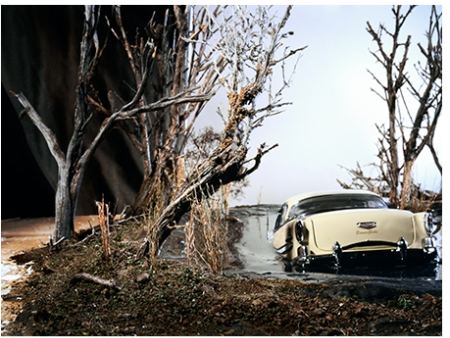 The stage sets Finger filmed and later recreated to photograph and dispose of resonate with moments of his childhood. They are memories potent enough to register outside his head and generalized enough to connect with similar memories of others. The only fox holes he dug, for instance, were in his childhood, playing war while Vietnam was ablaze on the nightly news. He was both bored and transfixed by what looked like his future. The ladder he made is missing a few rungs, giving its user a reason to continue to hide in his hole.
The stage sets Finger filmed and later recreated to photograph and dispose of resonate with moments of his childhood. They are memories potent enough to register outside his head and generalized enough to connect with similar memories of others. The only fox holes he dug, for instance, were in his childhood, playing war while Vietnam was ablaze on the nightly news. He was both bored and transfixed by what looked like his future. The ladder he made is missing a few rungs, giving its user a reason to continue to hide in his hole.
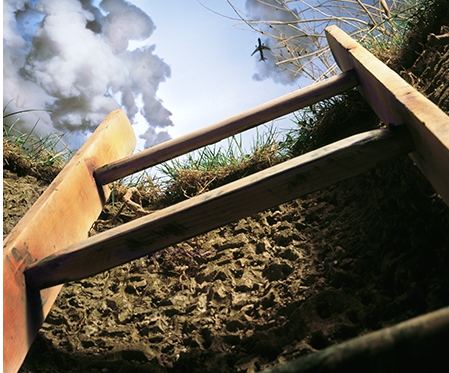 At Punch Gallery through Nov. 28.
At Punch Gallery through Nov. 28.
Except for Ambach & Rice, which this year is part NADA, Seattle galleries will be largely absent this year in Miami.
Each year since 2005, when Seattle artist Jaq Chartier and her husband, Dirk Park, rented a sweet little motel on Ocean Beach and invited 35 galleries to join them, Aqua Art Miami was a real contender among what were known as the hotel fairs, satellites to the main event, Art/Basel/Miami Beach. Not only was Aqua’s lineup strong, the hotel itself was a draw: open, airy and full of light. Wandering through too many of the other hotel fairs felt like being transported to the hallway fire scene in Barton Fink minus John Goodman, tour guide to the life of the mind.
Scott Lawrimore, who hadn’t yet opened his gallery in 2005 but was invited thanks to the quality of his lineup, called Aqua the “single most important event for Seattle artists since Life magazine published The Mystic Painters of the Northwest. “
(Photo, Adam L. Weintraub, 2005: Ben Beres sleeping off a late night of partying on Aqua’s open-air second floor.)
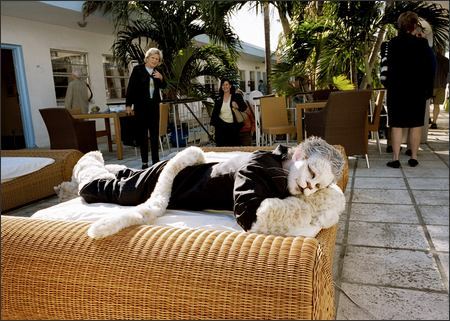 That was then. Lawrimore (who represents Beres) won’t be at Aqua this year and wasn’t in 2008. Thanks to the economy, turnovers in Miami are the rule this year, including at the main fair, with a 24 percent turnover. (Story here.) At Aqua, turnover is 75 percent.
That was then. Lawrimore (who represents Beres) won’t be at Aqua this year and wasn’t in 2008. Thanks to the economy, turnovers in Miami are the rule this year, including at the main fair, with a 24 percent turnover. (Story here.) At Aqua, turnover is 75 percent.
Of the 8 Seattle galleries in the original Aqua lineup, none is returning, although Howard House will have its name on an artist project room featuring Robert Yoder, and Francine Seders has the same relation to a room featuring Juan Alonso.
Chartier said the issue this year was filling the space. She and Park called 40 galleries to reach one that was “even remotely interested.” Attending Aqua for the first time from Seattle is La Familia Gallery. The chances of La Familia being previously accepted into Aqua hover around zero.
In 2007, just in time for the first inklings of the crash-to-come, Aqua split in two to expand, occupying the hotel and opening a warehouse space in Wynwood. While the hotel version of Aqua was inspired, the Wynwood space was easy to lose track of in the overall Miami glut. This year, there is no hotel fair for Aqua, and Wynwood, such as it is, will carry on.
The lease on the Wynwood space runs through this year. Dirk and Chartier had to participate. If they continue next year, they face a steep climb back to hotness.
At Nada, Ambach & Rice will feature Jeffry Mitchell and Karen Sargsyan, with a couple of drawings by Eric Yahnker.
Aqua coverage in the PI from 2005, 2006 and 2007. I didn’t go in 2008 and (alas) won’t be going this year.
In her 30s, having destroyed all student work, Fay Jones started painting tiny, folkloric scenes on her kitchen table. She used tempera for a while, tried oil paints and didn’t like them.
In a 2005 interview, she explained her preferences for acrylics and watercolor.
What other people like about oil I don’t. It dries slowly. Others like the brush against the canvas. I hated to wait for the paint to dry. My paintings were mud. There’s no romance to acrylics, but they’re fast and worked for me right away. Oils have a life of their own. With acrylics, you have to mix them to get good colors. For me, watercolors are a sensuous experience. They are as close as I come to romance in the process.
By the late 1970s, she began painting larger than her hand’s span but continued to work on paper. She made the leap to life-size figures after she realized she’d figured out everything she needed to know to work small.
I wanted to go beyond what I knew. I don’t plan my work in advance. I figure it out as I go. The formal qualities that make the painting click I find as I’m working. When a painting is larger than I am, I have to keep moving. Everything changes. The eye stays in motion, and I feel freer.
My paintings are weightless. When they’re weightless, they’re mine. I could roll 10 years worth of painting in a tube and carry it.
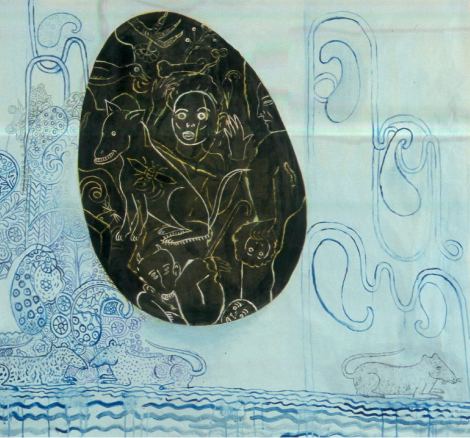
From Mike Leavitt’s Art Army.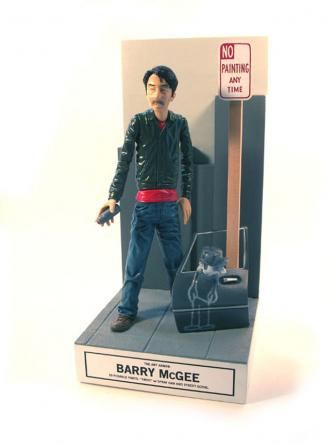
James Abbot McNeil Whistler, Arrangement in Black and Gray, No. 1, 1871 (Image via)
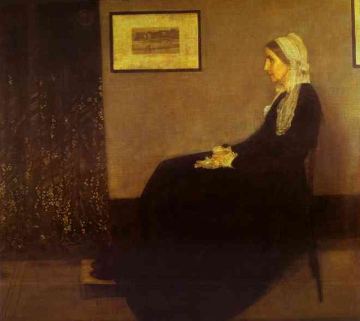
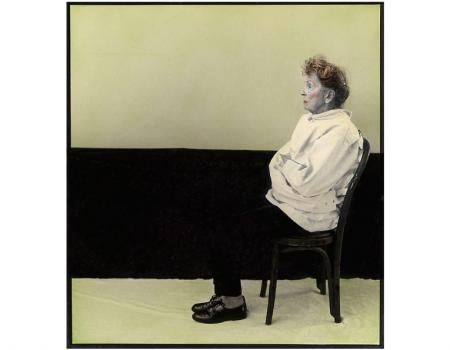
Last year at Howard House, from my review:
Ken Kelly has worked his way out of a decade-long slump to bounce back at the top of his game. For years his paintings labored under the effort of their making. By the time they were done, they had gone dry.
His new work is monochrome oil and enamel on a grid. Make that a subverted grid. Kelly offers Mondrian’s Broadway Boogie Woogie married to African mud cloth and lace dollies. It shouldn’t work but it does. As form snaps into place, you can almost hear the click.
These paintings are both maps and places. In their densities there is also air. Their patterns allude to landscapes, and shapes are suggestions hovering on the edge of fact. Kelly is once again the painter he promised to be, capable of merging force with grace.
Plot from the 2008 exhibit:
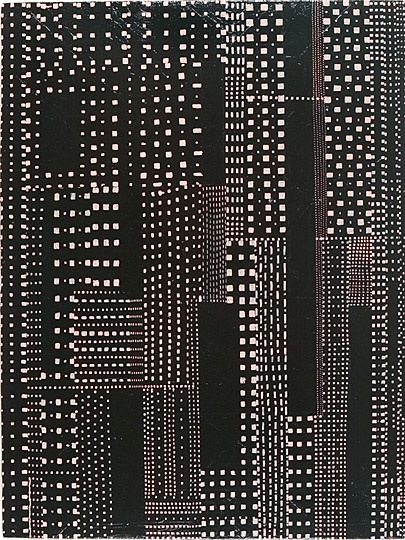 Second verse is not same as the first. The paintings in the current exhibit look like but aren’t stretched letters. He moved on from Mondrian to offer constructivist typography in a fun-house mirror.
Second verse is not same as the first. The paintings in the current exhibit look like but aren’t stretched letters. He moved on from Mondrian to offer constructivist typography in a fun-house mirror.
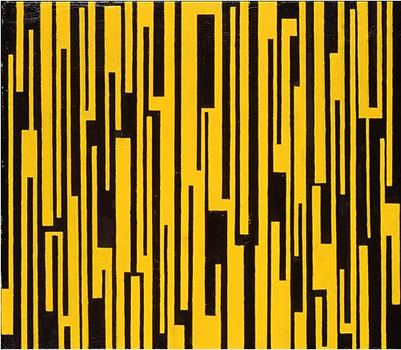 Kelly does not tape off. He pencils his shapes freehand onto canvas, which gives them, when seen in person, a tender intimacy that pushes against the loudmouth elan of their abstracted graphics.
Kelly does not tape off. He pencils his shapes freehand onto canvas, which gives them, when seen in person, a tender intimacy that pushes against the loudmouth elan of their abstracted graphics.
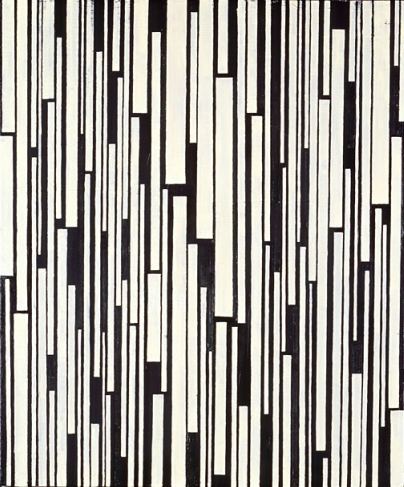 Through Nov. 28.Saturday, 1 p.m., Kelly talks about his work at the gallery.
Through Nov. 28.Saturday, 1 p.m., Kelly talks about his work at the gallery.
an ArtsJournal blog


